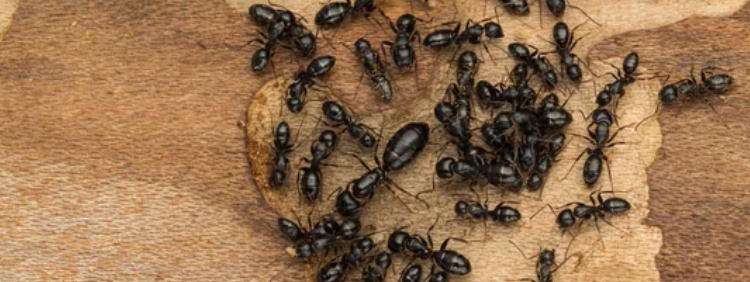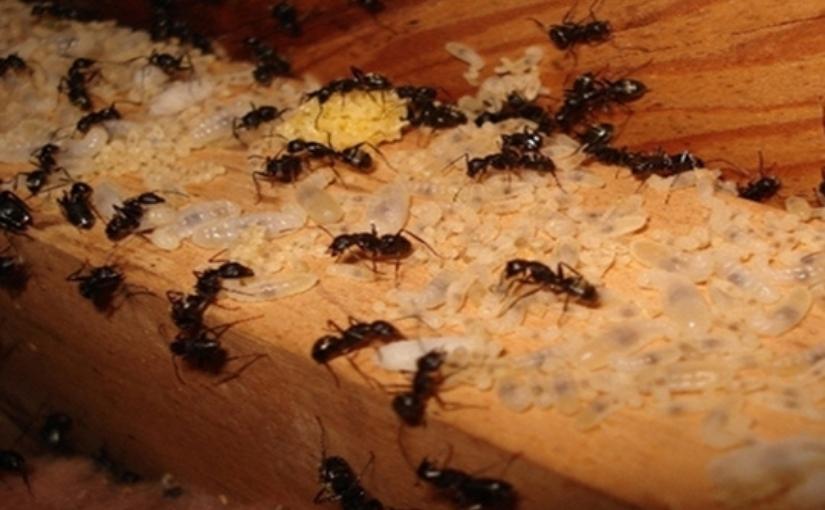
Even from a distance, most people can tell a bull from a cow and a turkey from a hen. Boys and girls of some animals, such as kittens and puppies, require a closer look to tell apart. Still, other species keep their genders a secret, no matter how thoroughly you investigate. One common Ontario pest that defies easy classification is the black carpenter ant. Many residents seeking pest control in Kitchener not only erroneously assume that only females have wings but also are uninformed about the distinct gender roles that exist in insect society. Here is an explanation of what causes carpenter ants to be male or female and how they differ in behaviour and appearance.
Ant Reproduction
Hilltopping is the name of the annual reproduction event that often makes people realize they may need an ant removal service. It occurs in spring or summer when winged carpenter ants of both sexes emerge from well-established colonies and swarm at an elevated location such as the top of a hill, building, or tree stump.
Males are the first to take flight, secreting pheromones that elicit the same behaviour in females. Groups of males then aggregate around the outnumbered females and begin their frenzied, once-in-a-lifetime mating activity. The females store sperm to fertilize thousands of eggs over the remainder of their 25-year life spans, while the unfortunate males die soon after the event.
Formation of an All-Female Colony
Each female that mates then flies off to form her own colony where she eventually loses her wings. Her first clutch contains only 5-15 eggs, which all hatch into females. She feeds these new wingless workers with her own fat reserves until they are mature. Once grown, they in turn gather food to feed the queen, construct the new colony, and care for subsequent clutches of eggs.
The same cycle continues for the first several years of the new, all-female, colony’s history. Once the population has grown sufficiently large, larvae begin to develop into female workers of three different sizes. This size difference results in the following division of labour:
- Large: Gather food and defend the nest against intruders.
- Small and medium: Excavate new tunnels and tend to the eggs, larvae, pupae, and queen.
Birth of Winged Males and Females
After the colony is 3-4 years old, the queen begins to lay two clutches of eggs per year. Those she lays in late summer continue to hatch into female workers that live approximately 7 years. Ants that hatch in the spring cohort, however, grow into winged males and females who fly from the nest in a swarm to mate and continue the cycle of new colony formation in a different location.
To produce male ants, the queen selects a subset of her clutch that she will not fertilize with stored sperm. Through the biological process of parthenogenesis, these eggs develop into males. Thus, it is impossible for a male ant to have a father because it always develops from an unfertilized egg. These winged males can reproduce but have no other role in the colony. They live only a few weeks or months and die shortly after mating.
Truly Nolen of Kitchener
Carpenter ants always seek out damp wood to build their nests. If you have seen them wandering through your home, it may be a sign of a water leak silently causing structural damage to unseen areas. Truly Nolen technicians will search for the carpenter ant nest, remove the queen, and advise you on how to make repairs that will prevent the ants from returning. Contact us today to schedule a home inspection by filling out our online form.
